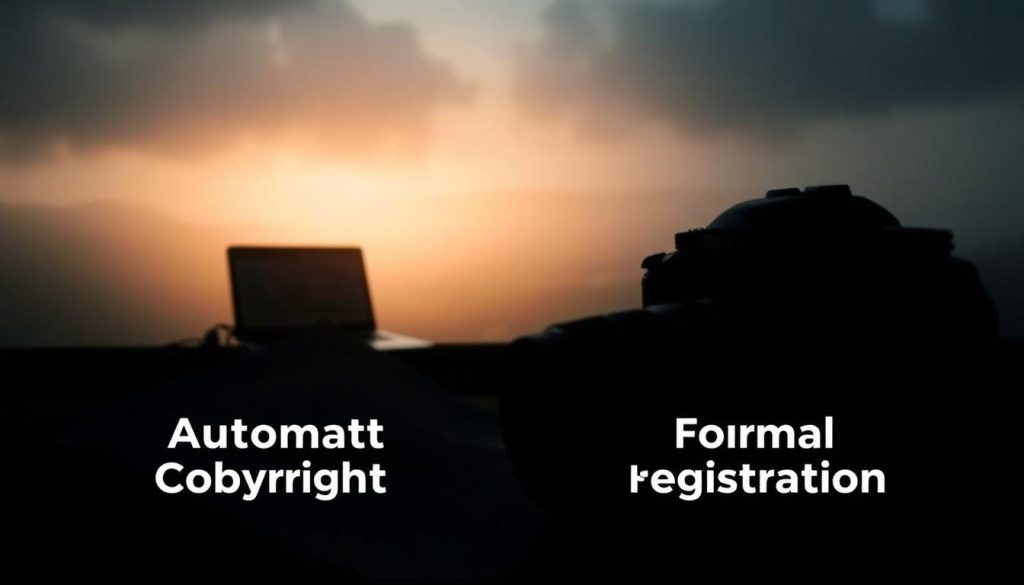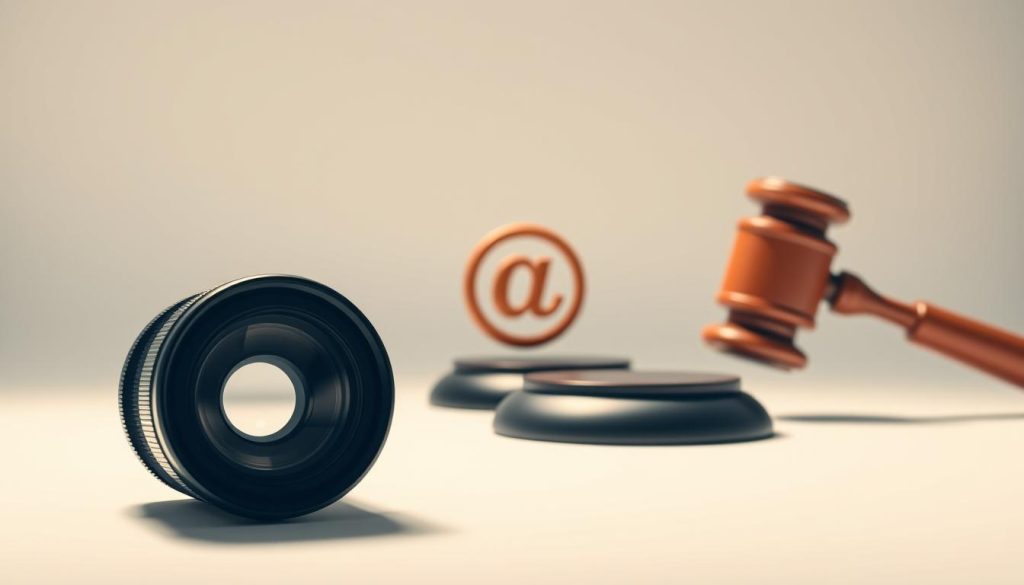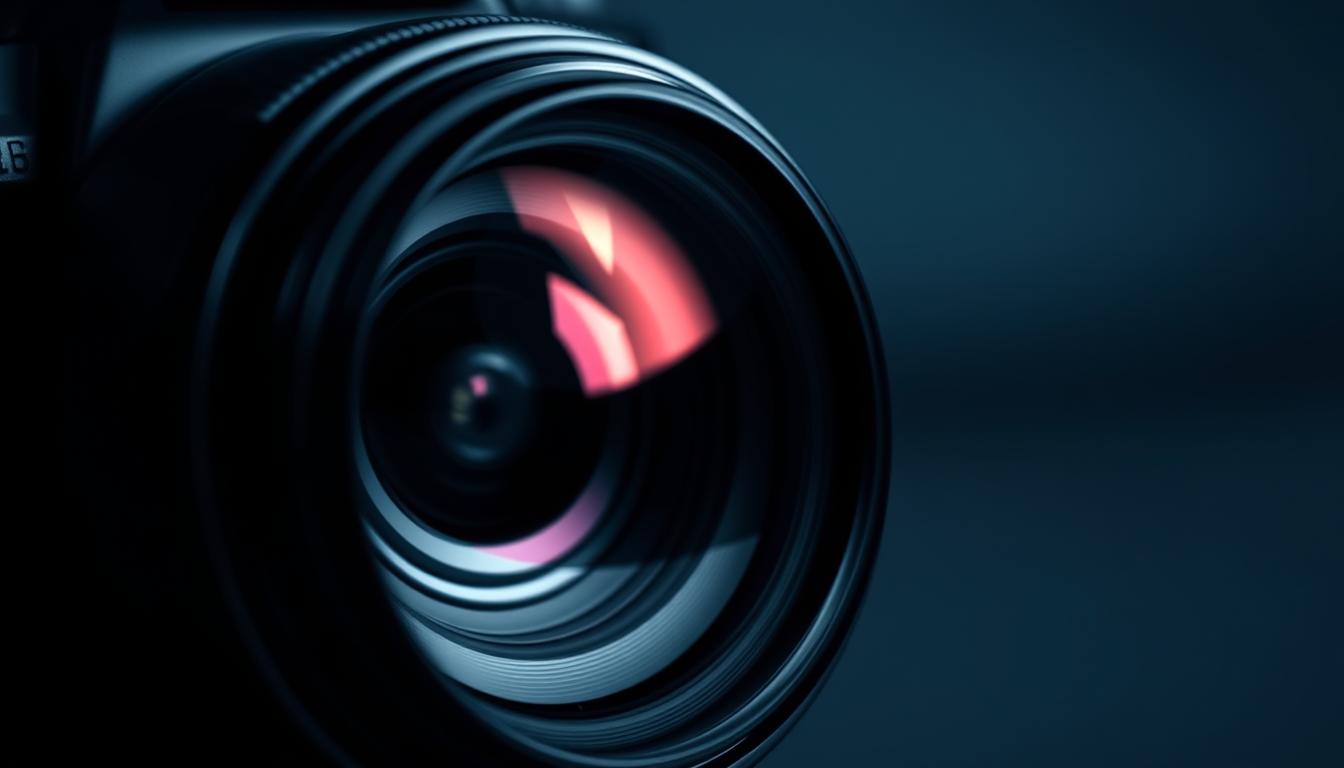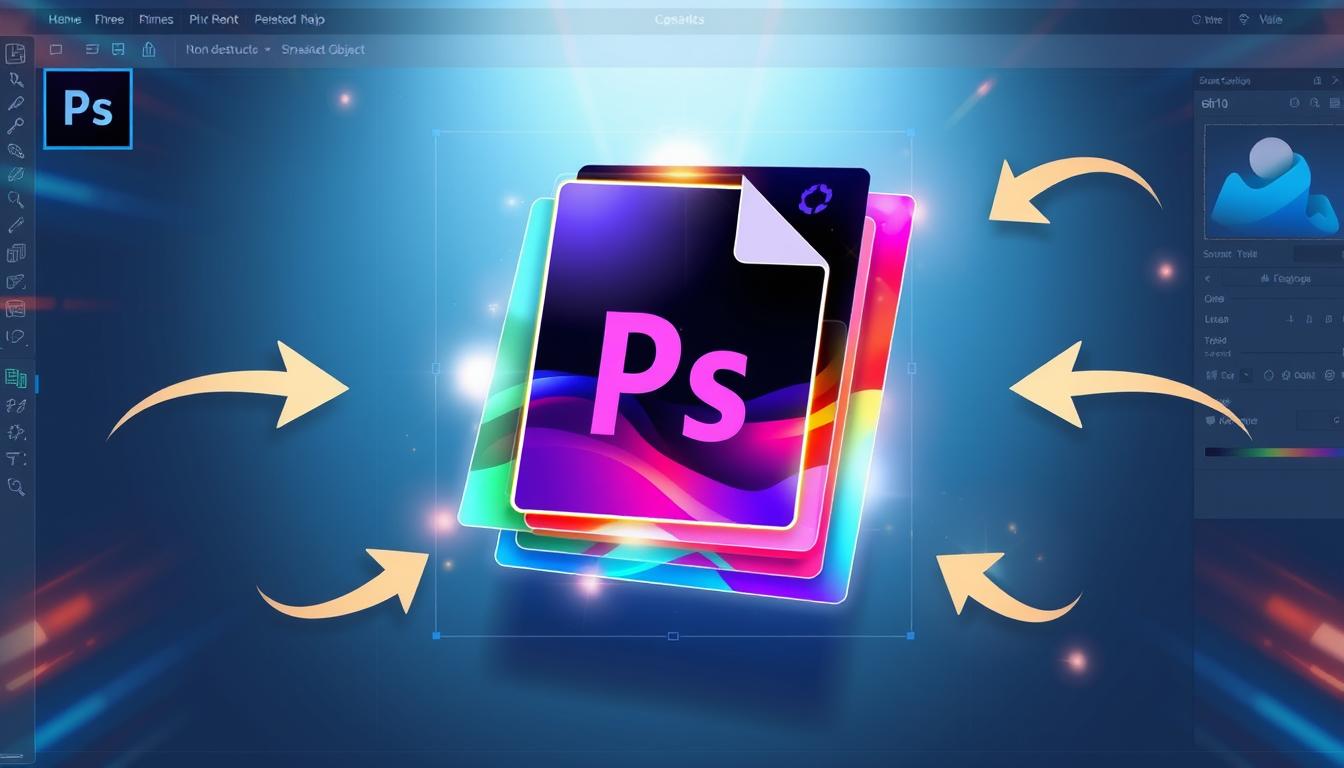As a photographer, your work is precious. Copyright protection is key to keeping it safe.
Knowing the basics of photography copyright helps guard your images from misuse.
Protecting your photos legally means registering them and fighting against misuse. You will learn how to safeguard your photographic endeavors by reading this post. In addition to that, it provides advice on legitimate ways to protect your work.
Understanding Photography Copyright Basics
As a photographer, it is essential to have a fundamental understanding of copyright in order to safeguard your work. Copyright law gives photographers special rights over their images. This lets them decide how their work is used and shared.
What Copyright Actually Means for Photographers
Copyright is a legal right for creators, like photographers. It lets them control how their work is used, for personal or business reasons. This means they have the power to decide how their images are used.
When Copyright Protection Begins
In the U.S., copyright starts when a work is saved in a physical form. For photographers, this happens when they save an image digitally or print it. If you want to acquire basic copyright protection for your work, you do not need to register it. Nevertheless, registering can provide further legal advantages.
Duration of Copyright Protection
The length of copyright protection depends on when the work was made and if it was published. For works made after January 1, 1978, it lasts 70 years after the author’s death. Knowing how long copyright lasts helps photographers manage their work and plan for the future.
Automatic Copyright vs. Formal Registration
Copyright protection for photographers starts automatically. But, there’s a big difference between this and formal registration. Knowing these differences is key to protecting your work legally.
The Protection You Already Have
Automatic copyright protection starts when you create something original. This means you own the copyright to your photos the moment you take them. Automatic copyright lets you control who can reproduce, distribute, and display your work, and even create new versions. But, relying only on automatic copyright might make it hard to fight copyright infringement.

Why Formal Registration Matters
Registering with the U.S. Through the use of Copyright Office, you are able to create a public record of your copyright. This can be very helpful in disputes. “Registration is a must for filing an infringement lawsuit in federal court,” where you can get statutory damages and lawyer fees. Without it, you’re stuck with actual damages, which are harder to prove.
Cost-Benefit Analysis of Registration
Photographers must think about the costs and benefits of formal registration. Registration costs are low, usually under $100 for online, making it a good investment. The benefits include stronger legal protection and the chance to get statutory damages. As the photography world grows, registered copyrights give a big edge in protecting your work.
In summary, while automatic copyright is a basic protection, formal registration adds more legal benefits. It’s crucial for protecting your photography. By understanding the differences and weighing the costs and benefits, photographers can make smart choices to protect their work.
How Do I Copyright My Photography Through Official Registration
Photographs can be easily and legally protected by registering them with the United States Copyright Office. It provides a solid foundation for defending your rights and safeguards your work.
Step-by-Step Registration Process with the U.S. Copyright Office
Here is the process:
- Create an account on the U.S. Copyright Office’s online portal.
- Fill out the required application form, usually Form VA for visual arts.
- Upload your photographs and pay the registration fee.
- Submit your application and wait for processing.
Required Materials and Information
To register, you’ll need:
- Digital copies of your photographs.
- Title(s) of the work(s) being registered.
- As the party claiming copyright, please include your name and contact details.
- Details about the work, such as the year created and any relevant previous registrations.
Registration Fees and Timeframes
The registration fee depends on the method. Online registration is cheaper and faster, taking 3-6 months to process. Paper registration is more expensive and takes longer.
Online vs. Paper Registration
Online registration is the best choice because it’s efficient and cost-effective. It lets you submit your work electronically and get faster results. Paper registration is slower and more complicated.
By following these steps and choosing the right method, photographers can protect their work legally. Official registration is key to defending against infringement and managing your intellectual property.
Registering Single Photos vs. Collections
Knowing how to register your photos is key to getting the most from copyright. You can register each photo separately or together in a collection. Your requirements and objectives will dictate the decision.
When to Register Individual Images
It’s wise to register each photo if it’s very valuable or special to you. This way, you can seek damages if someone uses it without permission.
How to Register Multiple Photos at Once
To register many photos at once, group them into a collection. You can submit them as a single, unpublished collection or a series of published works. The U.S. With Copyright Office, you may register numerous images with just one program. Consequently, it requires less effort and money.
Unpublished vs. Published Collections
When registering collections, it’s important to know if they’re unpublished or published. Unpublished collections are images not yet shared publicly. Published collections are images that have been shared or displayed. The registration process might be different for each type.
| Registration Type | Best For | Benefits |
|---|---|---|
| Single Image Registration | Valuable or significant photographs | Stronger protection for individual images |
| Collection Registration | Groups of related images | Simplified process, reduced costs |
| Unpublished Collections | Images not yet shared publicly | Flexibility in managing unpublished work |
| Published Collections | Images that have been distributed or displayed | Protection for publicly available images |
Using Copyright Notices and Symbols
Knowing how to use copyright notices and symbols is key for photographers. Informing readers that their work is legally protected is accomplished through the publication of a copyright notice.
Proper Format for Copyright Notices
The year, your name, and the sign for copyright (©) are the three components that comprise a copyright notice. Your name makes up the third component. A good example would be the phrase “© 2023 John Doe.” Having a layout like this reveals that you are the author of the material.
Where to Place Notices on Digital and Print Images
Put copyright notices where they’re easy to see on digital and print images. For digital images, use metadata or a watermark. For prints, place it on the back or in a corner.
Legal Value of Copyright Notices
Even though they’re not needed in the U.S., copyright notices can scare off infringers. The U.S. Copyright Office says they help show your work is protected.
By using copyright notices and symbols right, photographers can protect their work better. They can also show they own it.
Legal Protections Provided by Copyright Registration

Copyright registration is key for photographers to protect their work. It gives them legal benefits that help in case of copyright infringement.
Statutory Damages and Legal Fee Recovery
A major benefit of registering your copyright is that it gives you the right to seek statutory damages and recover legal fees if someone uses your work without permission. It also acts as a clear warning to others that your work is legally protected and you’re prepared to defend it.
Establishing Proof of Ownership
Registration proves you own the work, making it easier to show your rights in court. This can make legal battles faster and cheaper.
Public Record Benefits
Copyright registration also makes your ownership public. This boosts the value and credibility of your work. It’s very useful for licensing and business deals.
| Benefit | Description | Impact |
|---|---|---|
| Statutory Damages | Eligibility for predetermined damages in infringement cases | Significant financial compensation |
| Legal Fee Recovery | Ability to recover attorney fees in legal disputes | Reduced financial burden in litigation |
| Proof of Ownership | Registration serves as evidence of ownership | Streamlined legal process |
Identifying Copyright Infringement
Photographers need to know how to spot copyright infringement to protect their work. In today’s world, images can spread quickly without permission.
Common Types of Photography Infringement
Copyright infringement can happen in many ways, including:
- Unauthorized use on websites or social media
- Use in advertising or commercial materials
- Manipulation or editing of the original image without permission
- Distribution or sale of copies without authorization
Tools for Detecting Unauthorized Use
There are many tools to find infringement, such as:
- Reverse image search engines like Google Images
- Specialized monitoring services track image usage online and help detect unauthorized use or copyright violations.
- Monitoring applications for social media that provide you with notifications of possible violations
Reverse Image Search Techniques
Reverse image search is a key tool for finding infringement. Here are some techniques:
Google Image Search
Uploading a photo or using a URL to search for photos that are similar is possible with Google’s image search. It helps identify instances in which your photographs have been used without your permission.
Specialized Photography Monitoring Services
Services like ImageBrief or Digimarc offer advanced tracking. They monitor image use online and give detailed reports on infringement.
By using these tools and techniques, photographers can better find and stop copyright infringement. This helps protect their work and keeps their creative control.
Taking Action Against Infringement
Protecting your photography work is more than just registering your copyright. It’s about taking action when someone uses your images without permission.
DMCA Takedown Notices
DMCA takedown notices are a powerful tool against infringement. They are formal requests to remove copyrighted content from websites or platforms. For the notification to be effective, it must contain both the URL of the content that is infringing and a statement stating that it is believed to be infringing.
A DMCA takedown notice is a strong first step to address copyright infringement. It often resolves issues quickly without involving legal action, as most platforms have straightforward procedures for handling them.
Cease and Desist Letters
In cases of serious or ongoing copyright violations, issuing a cease and desist letter is often necessary. It formally demands that the infringing party stop using the content and can serve as a precursor to legal action if ignored.
This formal document demands the infringer stop using your work right away. It’s used when infringement is big or when a DMCA notice doesn’t work.
Writing a cease and desist letter needs care. It’s best done with an attorney to make sure it’s legally strong and effective.
When to Consider Legal Action
Not every infringement case needs legal action. But, if the infringement is causing big financial losses or other steps have failed, legal action might be the best choice. Legal action can lead to damages and legal fees, helping protect your work.
Working with Intellectual Property Attorneys
Copyright law can be tricky. Working with an intellectual property attorney is very helpful. They can help with everything from writing cease and desist letters to representing you in court.
| Action | Description | Best Used For |
|---|---|---|
| DMCA Takedown Notice | Formal request to remove infringing content | Initial infringement response |
| Cease and Desist Letter | Demands the infringer stop using your work | Serious or persistent infringement |
| Legal Action | Pursuing damages through the courts | Significant financial harm or failed other measures |
Knowing your options and taking the right action can protect your photography work. It helps you keep control over your creative output.
Preventative Measures to Protect Your Photography
Protecting your photography starts with knowing how to prevent misuse. Your photos are not just your art but also your income. So, it’s important to make sure your images are protected from being used without permission.
Watermarking Strategies
Watermarking is a clear way to stop others from using your photos without permission. It adds a logo or text over your images. Effective watermarking should be clear enough to stop misuse but not too much to ruin the photo’s look.
Metadata Embedding
Adding metadata to your photos is a great way to prove ownership. It includes details like your name, contact info, and copyright information, making it harder for others to claim your work and acting as a deterrent to potential infringers.
Image Resolution Control
Sharing images at lower resolutions can limit their use. This makes them less good for commercial use without your okay. It’s a simple way to protect your work.
Portfolio Website Protection Techniques
Your portfolio website is a key place to protect your work from misuse. Using password protection or JavaScript to stop right-click saving adds security.
| Protection Technique | Description | Effectiveness |
|---|---|---|
| Watermarking | Visible logo or text on images | High |
| Metadata Embedding | Embedding ownership information | Medium |
| Image Resolution Control | Sharing lower resolution images | Medium |
| Portfolio Website Protection | Password protection and disabling right-click | High |
By using these steps, photographers can greatly lower the chance of their work being used without permission. It’s about being ahead and controlling how your images are shared and used online.
Social Media and Copyright Protection
Social media is an essential tool for photographers to showcase their work, but protecting copyrights online can be challenging. It’s important for photographers to understand both the risks and rewards of sharing their images on these platforms.
Understanding Platform Terms of Service
Photographers must know the terms of each social media site. These terms can affect their copyright. It’s important to read and understand these rules to keep control over their work.
Maintaining Rights While Sharing Online
To keep their rights, photographers should be careful when sharing. Using low-res images or watermarks can help. Also, registering their work with the U.S. Copyright Office before sharing can offer protection.
Platform-Specific Protection Settings
Many social media sites have protection tools. For example, Instagram lets creators add watermarks. Facebook helps monitor content use. Knowing how to use these tools is essential for protecting your work. They help you keep control and prevent others from using your images without permission.
Responding to Social Media Infringement
If a photographer finds their work used without permission, they should act fast. They can report it to the platform or use DMCA takedown notices. Sometimes, seeking help from a lawyer may be necessary to handle more complex issues or take legal action to protect your work.
Understanding social media and copyright can help photographers protect their work. They can still get exposure from these platforms.
Licensing Your Photography Work
Photography licensing gives you control over how your images are used and provides a way to monetize your work. It’s a smart choice for photographers looking to earn income from their creations.
Types of Photography Licenses
Photographers can offer different licenses, each with its own rules. The most common ones are:
- Royalty-Free (RF) License: Buyers can use the image many times without extra fees.
- Rights-Managed (RM) License: Buyers must say how they plan to use the image. Fees depend on the use.
- Exclusive License: Gives the buyer all rights, so you can’t license the image to others.
- Non-Exclusive License: Lets you license the image to many people at once.
Setting Terms and Pricing
When deciding on terms and pricing, think about how the image will be used, who will see it, and how long the license lasts. Also, make sure to check industry standards to price it fairly.
Using Licensing Platforms
Licensing platforms make selling your photos easier. Sites like Shutterstock, Getty Images, and iStock handle marketing and sales. This lets you focus on taking more photos.
Creative Commons Options
Creative Commons licenses are a flexible option. They allow you to set the terms for how others can use your work.
You can choose from options that allow any use with credit to more restrictive ones.
Conclusion: Establishing a Personal Copyright Strategy
Protecting your photography work is key in today’s digital world. Knowing the basics of copyright law and taking action can help. A personal copyright strategy is vital to keep control over your work and stop unauthorized use.
A good copyright strategy includes registering your work with the U.S. Copyright Office and using copyright notices. Being ready to act against infringement is also important. Registering your photography gives you legal protection and the chance to get statutory damages if someone infringes on your work. This approach helps protect your intellectual property and lets you share your work confidently.
Creating a copyright strategy that fits your needs helps you deal with copyright law’s complexities. This way, you can better protect your photography and keep its value. A strong copyright strategy is crucial for safeguarding your photography work and defending your rights as a creator.
FAQ
What is copyright protection for photographers?
Copyright protection for photographers is a legal shield. It gives them control over their work. This includes the right to reproduce, distribute, and display their photos.
How long does copyright protection last?
It lasts for the photographer’s life plus 70 years. This is according to U.S. copyright law.
How can I detect unauthorized use of my photographs?
Use tools like Google Image Search and specialized services. Also, try reverse image search to find unauthorized use of your photos.
What are my options for licensing my photography work?
You can license your work through different types of licenses. This includes exclusive or non-exclusive licenses. Use platforms or Creative Commons to manage your licenses and set terms and prices.





